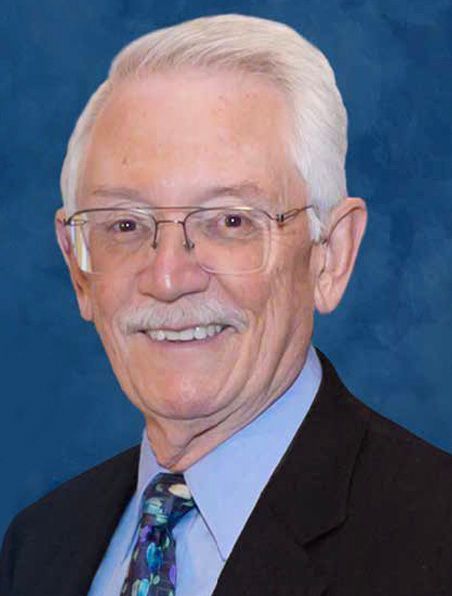Novel Biomarker Testing Could Enhance Immunotherapy Treatment Decisions in NSCLC
PD-L1 and tumor mutational burden are established biomarkers for leveraging immunotherapy in non–small cell lung cancer; however, their use may not be appropriate in determining treatment decisions for all patients.
David R. Gandara, MD

PD-L1 and tumor mutational burden (TMB) are established biomarkers for driving immunotherapy treatment decisions in patients with non–small cell lung cancer (NSCLC). However, their use may not be appropriate in determining therapies for all patients, according to David R. Gandara, MD, who added that emerging genetic tests seek to expand on how biomarkers are utilized in the NSCLC space.
“[PD-L1 and TMB] are both good biomarkers for immunotherapy, but they’re incomplete. They only tell a part of the story,” Gandara said.
During a presentation at the 23rd Annual International Lung Cancer Congress® (ILCC), Gandara addressed two new genetic tests, the Lung Cancer Master Protocol and DetermaIO, and explained how they could eventually alter how immunotherapy treatment decisions are made in clinical practice.
In an interview with OncLive®, Gandara, the chief medical officer of the International Society of Liquid Biopsy, the co-director of the Center for Experimental Therapeutics in Cancer, a senior advisor to the director at UC Davis Comprehensive Cancer Center, and an adjunct clinical professor of the Translational and Clinical Research Program at the University of Hawaii Cancer Center, discussed how the Lung Cancer Master Protocol and DetermaIO could expand the use of biomarkers in NSCLC to better determine which patients would benefit most from immunotherapy.
OncLive®: How could new biomarkers affect immunotherapy decisions in NSCLC, and how could they supplement what is known about PD-L1 and TMB?
Gandara: My presentation at this meeting [focused] on new predictive biomarkers for checkpoint immunotherapy in NSCLC. This is a topic of considerable interest. We do two have biomarkers that are FDA approved [as a biomarker for administering treatment] in different situations. One is immunohistochemistry for PD-L1, which is tied to many drug regimens, and the second is TMB. [However], there’s controversy about how important they are and when they should be used.
Interestingly, they are largely not overlapping. They’re independent biomarkers. Both of these markers measure the inflammatory component of the immune microenvironment. And the newer [genetic] tests—I’ll talk about two of these—also add in negative signals. In other words, what makes a tumor cold instead of hot? What makes it less likely to respond to checkpoint immunotherapy?
Could you elaborate on the first new genetic test, the Lung Cancer Master Protocol?
The first of these is a composite gene signature that we have worked on with our Lung-Map group [called] the Lung Cancer Master Protocol. [It was developed] together with Foundation Medicine, who is our partner for doing the genomics for that large project. This signature is an add-on to both PD-L1 and TMB, and it [comprises] several other genes that represent either inflammatory or cold signatures.
We have just finished what we would call a test set, where we used specimens from the Lung Cancer Master Protocol, and then most recently, [we completed] a validation set on a separate large phase 3 trial, where we have perfected this composite gene signature. This is now being submitted to another meeting for full presentation, but I previewed it [at ILCC]. It seems to be quite effective in improving the predictive signature of the other biomarkers we already have.
What is unique about the second new genetic test, DetermaIO?
The second test is called the DetermaIO, and it uses this same theme of the tumor microenvironment to develop a signature. Only in this case, it’s a 27-gene signature. This signature was developed initially for triple-negative breast cancer, where the data are already presented. What I talked about at ILCC are the initial data in NSCLC, where this signature is superior to both PD-L1 and TMB in predicting progression-free survival and overall survival. And it is now entering large, randomized trials.
These are just two examples of many different efforts that are ongoing to improve our ability to determine [which patients] benefit from checkpoint immunotherapy, whether it’s given by itself or together with chemotherapy.
How could these tests eventually affect clinical practice?
What we’re using today to assess how patients benefit from immunotherapy and what we do in day-to-day practice is going to change. We’re not necessarily going to discard other biomarkers, such as PD-L1 or TMB. But we’re going to add to them so that we’re better able to select what the best approach is [for one patient vs the next].
As one of the co-chairs of the 2022 ILCC, what is the importance this meeting?
ILCC is quite different from most other thoracic malignancy meetings. It’s what I would call a think tank in that it has a group of lung cancer experts and a sophisticated audience, so we can discuss [clinical] controversies. This meeting is known for having panel discussions and audience response devices so that we can gauge, before and after a session, how much everybody has learned from each other.
There are many case-based panels, where we put these concepts [into practice]. We present a case and then ask, [for example], ‘What tests would you order?’ And then based on these tests, ‘What treatment would you deliver?’ It’s a one-of-a-kind meeting in thoracic malignancies.




